Introduction:
A few days ago, I visited thekey.company and and saw something neat on their front page – a new, metal Portico. The Portico68 Black Label, apparently – an updated design featuring an aluminum case.
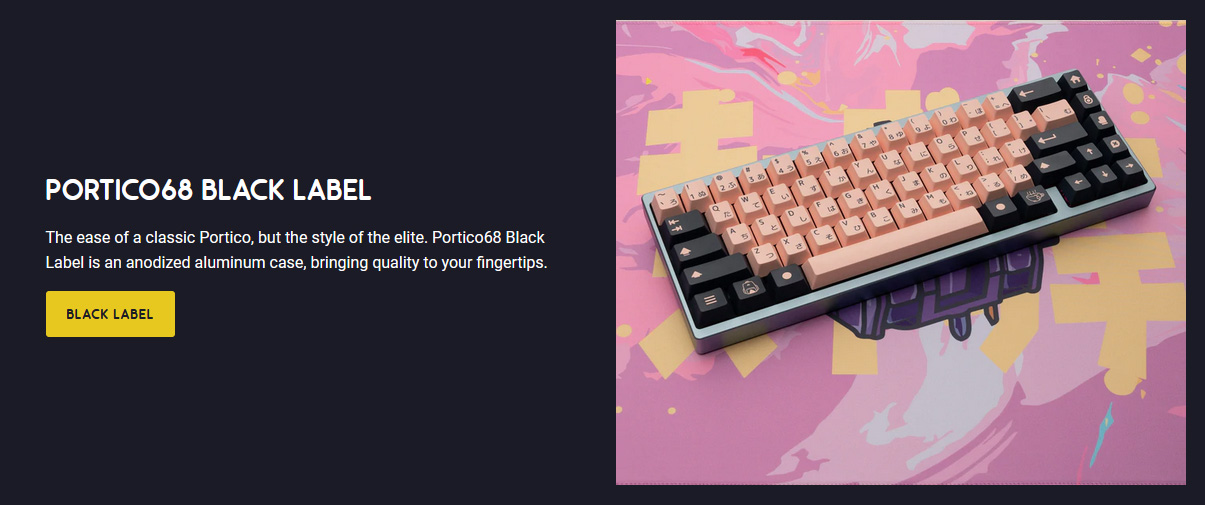
Hey awesome! …it’s still got 67 keys, right? (It does.)
Now I don’t know about you, but the idea of a premium Portico is one I’m very happy to hear about. The KBD67L might still be my favorite “entry” board, but I actually put a lot more mileage on my Portico for a few specific reasons, and as such that keyboard has become my true stand-by daily driver.
That being the case, I was pleased indeed to find out about the metal one being a thing. I followed the link expecting an interest-check, group-buy page, or perhaps pre-order form.
Nope! This thing is in-stock and ready to go.
I bought one for myself because I wanted one, and am writing this to share my first impressions as a customer – this one isn’t sponsored.
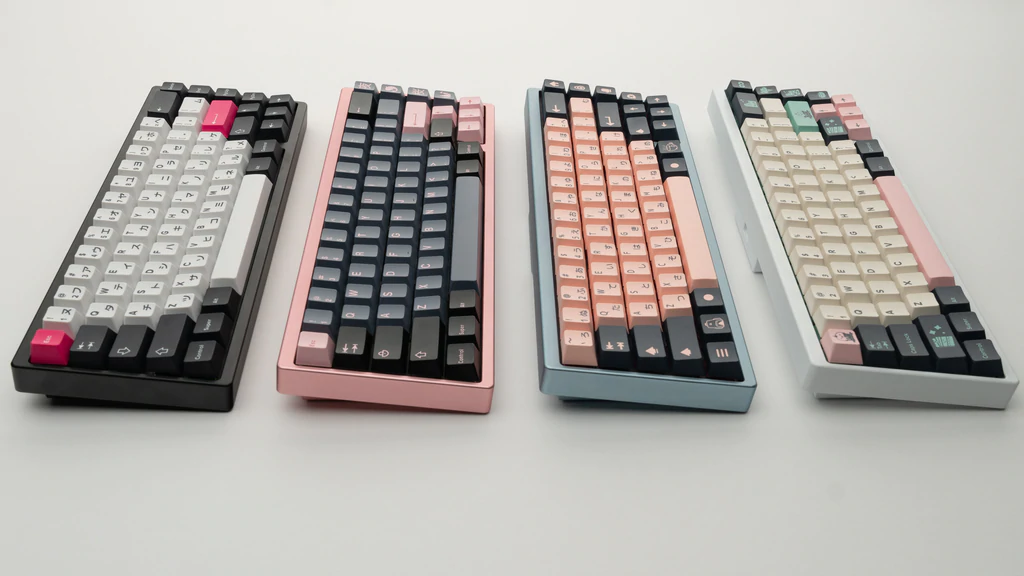
A shot from TKC’s website of the four colors available.
Now. Before I go any farther I want to address the innocuous if quirky pink elephant in the room: the name. No, I have no real idea why a 67-key layout with a white label on the bottom is called the “Portico68 Black Label”.
My first guess is intentional dissonance to drive discussion. (If so, success here lol) My second guess is “67 +1”. My third guess is they associate “68” being in the name of many 65% keyboards while somehow missing it refers to the 68-key version of the layout. Naaahhh…
As for “Black Label”, I suppose that’s simply meant to be “fancy” – to communicate a premium, even exclusive identity for the product. There are lots of mildly-curious, head-scratching names in keeb-space, and this is just one more of them. Well. It is a 65%, and it is pretty fancy. Moving on.
Context:
As far as I can tell, this keeb was released with very little fanfare.
It’s at the top of TKC’s homepage as a featured product at the moment, but no special banners, no influencers talking about it all over the place (yet), no ICs on geekhack – just, “oh hey by the way we massively upgraded our really great entry keeb, and oh yeah it’s in stock” – definitely not how I would have expected this keyboard to come on the scene.
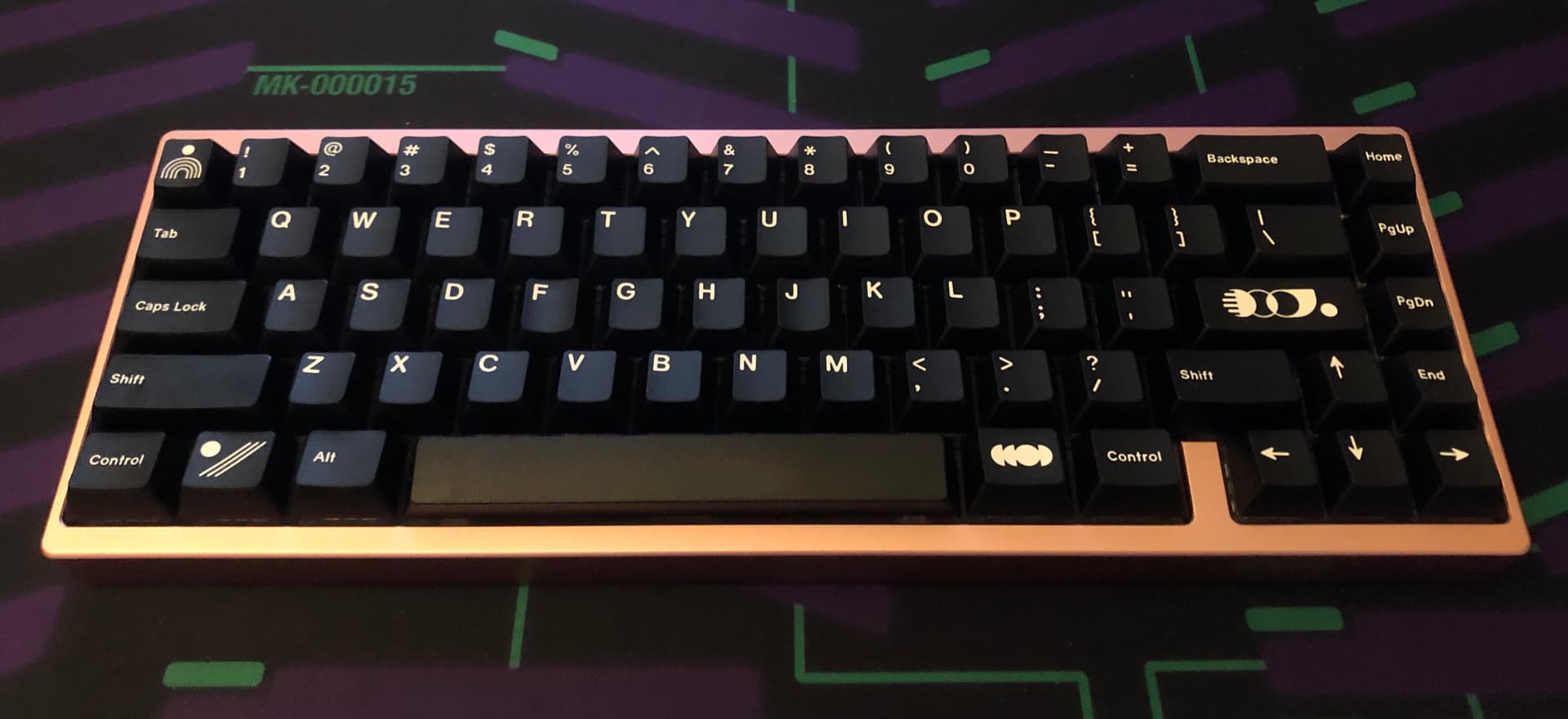
Here’s mine. Yes, I got the pink one. Yes, I love it.
I’m wondering if this means they don’t think of it as much of a big deal or big product – or perhaps they intend for the product to speak for and sell itself. I do have to say, the product page is almost NovelKeys-level scant in terms of detail… almost. The linked build guide and FAQ are for the plastic version. Not all the specs are correct (says it comes with felt instead of Poron, for example). BUT – what is clear on the page is this – what we have here is an aluminum take on the Portico, and to me, that’s a tantalizing prospect.
I bought one, I’m using it – now let’s see how it’s living up to my expectations so far.
Unboxing / In the box:
As noted in the sales page, this first run of P68BLs come with a generic hard-shell “gun-style” case rather than a typical keyboard bag. Apparently this was the result of some mix-up in the pipeline, but hey – good on them for finding an alternative solution that gets the job done. It is in fact a hard-shell pistol case, and it holds the keeb just fine. It’s a bit bigger and more chunky than a typical 65% case – but you won’t have to worry about protection.
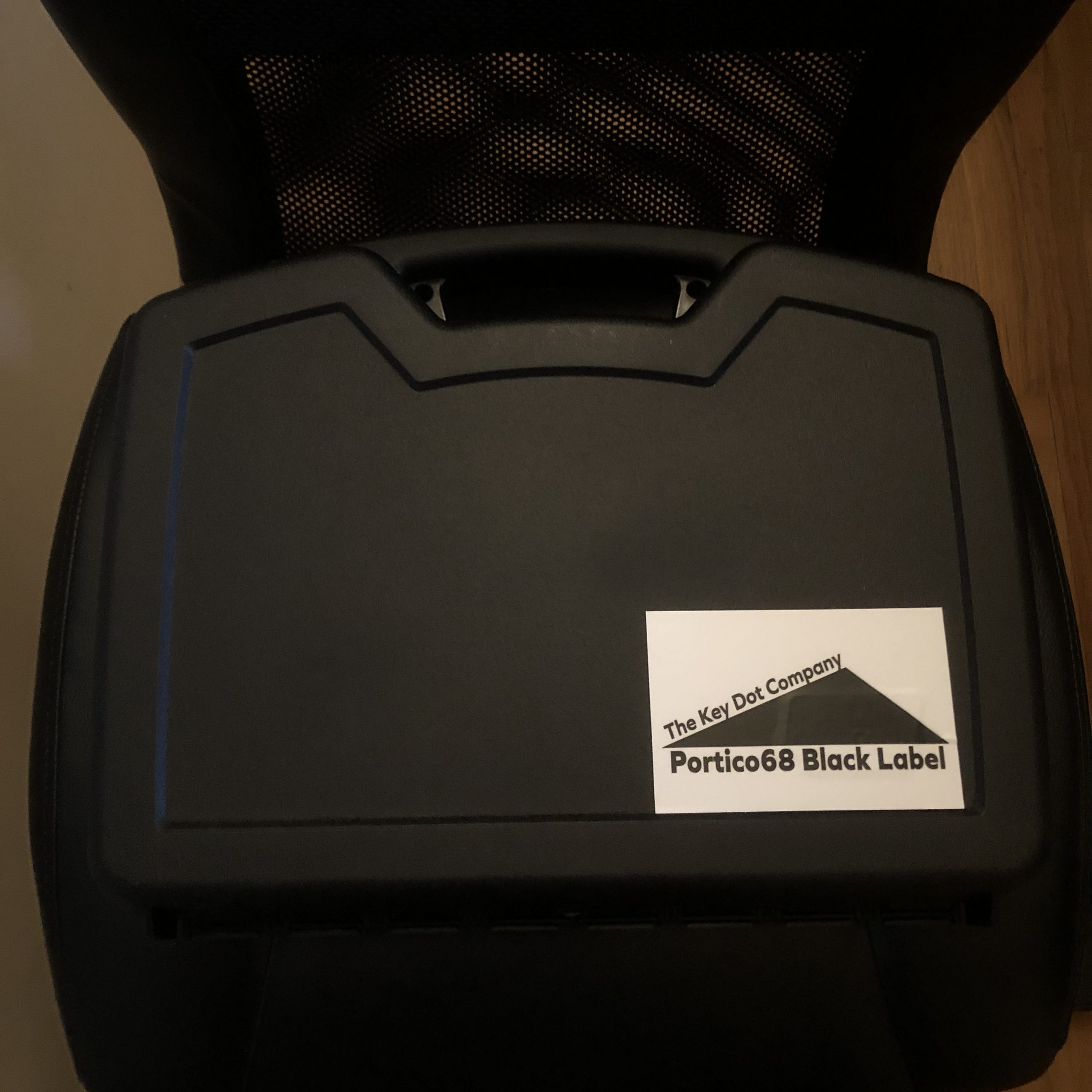
This is ample but… well… I’m not taking this to work. Or school. Or anywhere I might otherwise take my keeb.
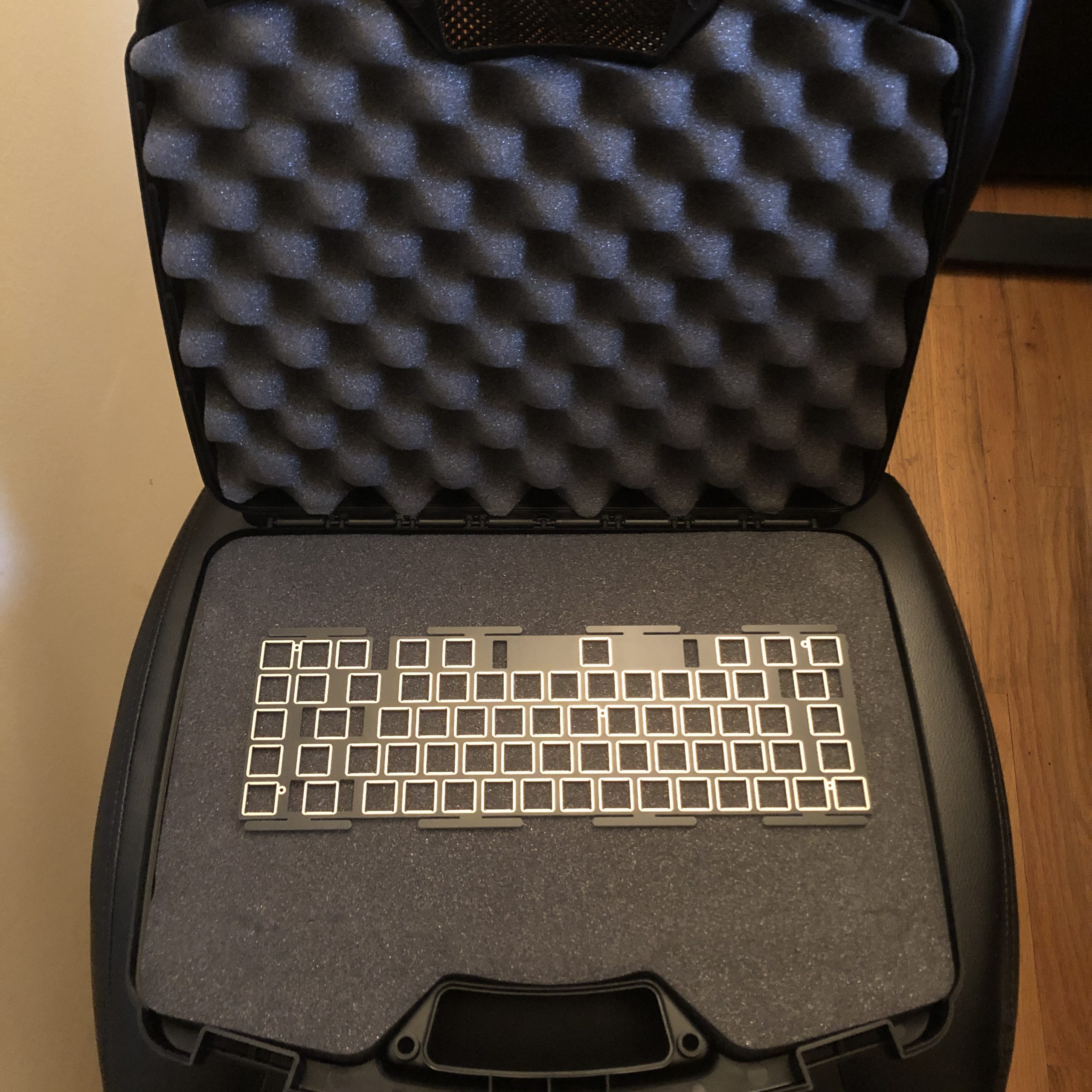
A look on the inside – yep, that’s a gun case, but hey it works. See inside the bonus FR4 plate that comes with the kit. You can even download the plate file on their website if you’d like it in some other material.
The MFR logo of the case is covered with a vinyl sticker indicating the Portico68 Black Label contained within; it looks a little slap-dash since the case logo is embossed, which you can see through the sticker. Gets the job done, though!
Included in the case is the mostly-assembled keyboard with flex-cut polycarbonate plate pre-installed along with some other accessories. There’s an additional FR4 plate, an optional foam/plastic composite layer for the PCB, and a set of C3 Equalz V3 stabs – complete with an accompanying kit of adhesive pads and gaskets for all sorts of modding options.
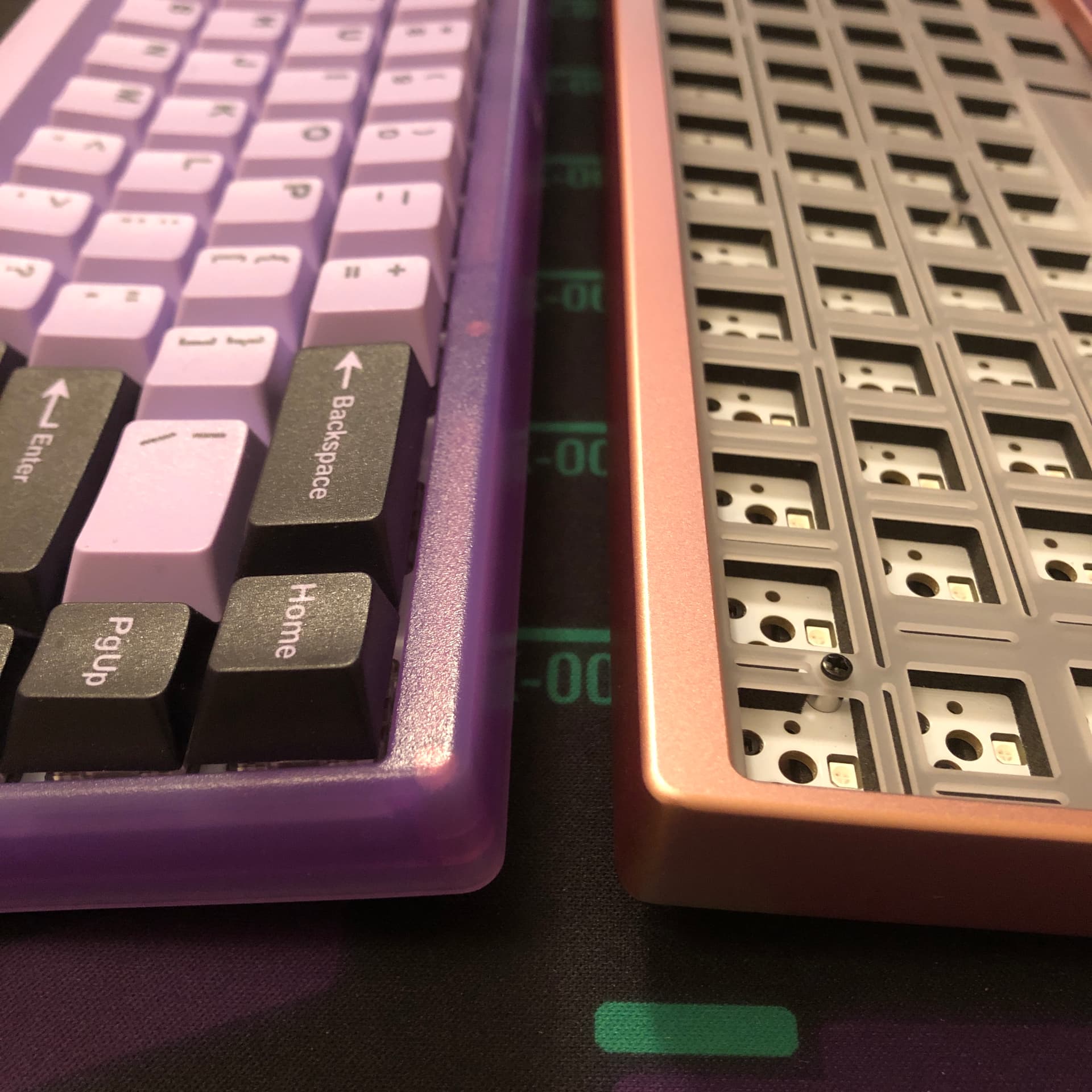
Another side-by-side comparing the two Porticos. On the left you can see the translucent polycarb case. On the right you can see the flex-cut plate, and the foam layer beneath it.
While it’s normal for a kit of this kind not to come with caps and switches, a cable of any kind is notably absent. I suppose that’s normal enough for keebs getting into the higher end of things, but it stands-out just a little in context of the plastic version including one.
Material Impressions:
On first glance, what we have here is indeed an aluminum take on the classic Portico. It has the same shape and format with a few small but notable changes:
- USBC daughter board: this puts the port lower-down and improves the durability and serviceability of the keeb
- Gasket placement: aside from being a bit thicker, the gaskets stay with the case instead of the plate this time around
- Feet: generic bump-ons replaced with wider silicone bars that perform better
- Materials: aluminum case aside, the kit now also comes with a polycarbonate flex-cut plate
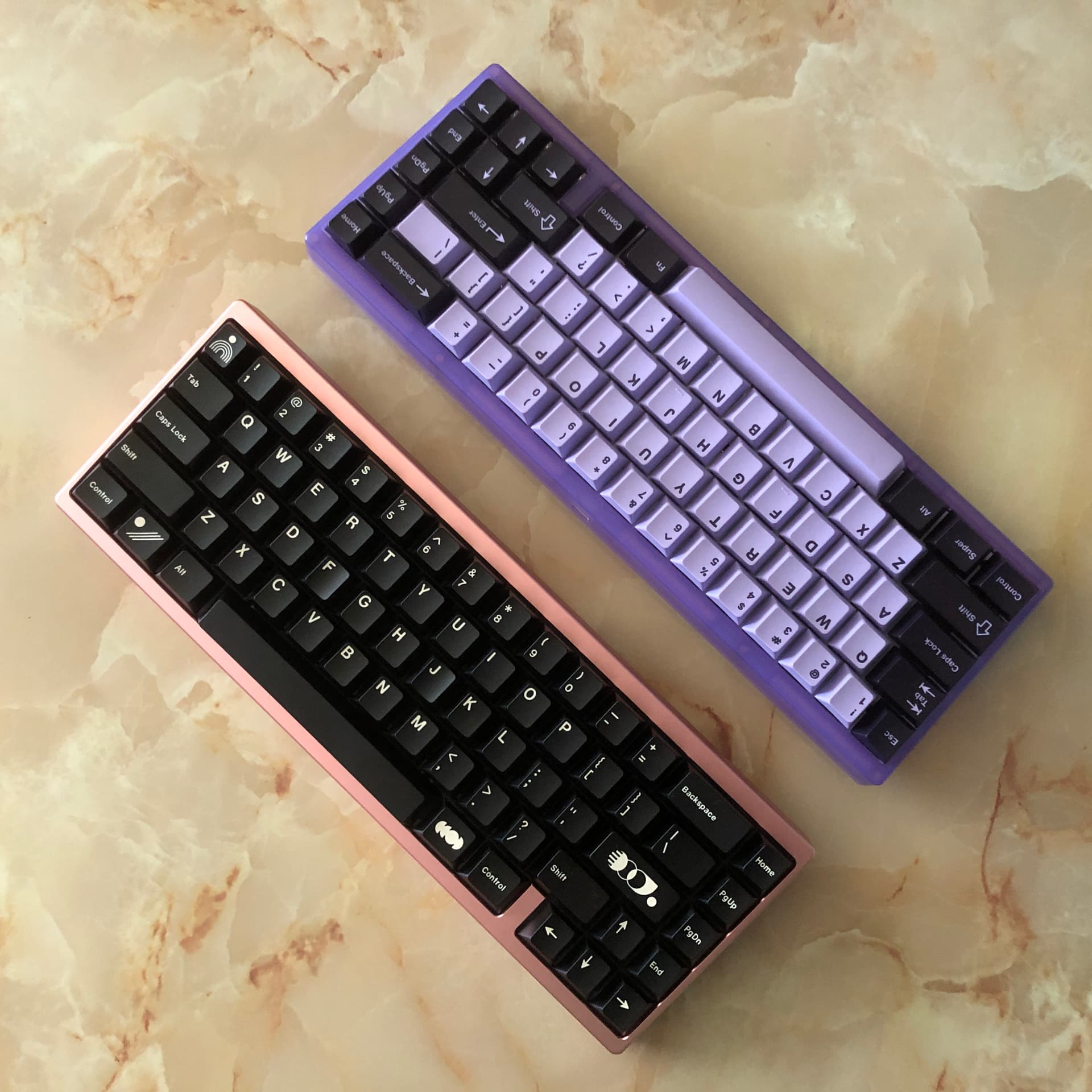
Portico siblings. Classic version seen above with PBT Taro from NovelKeys, and the Black Label version with GMK Noire.
The quality of the case looks excellent. The finish is smooth and consistent, and I don’t see any imperfections on it. Only the tapped screw holes on the inside have a little silver showing around them. Just like with the plastic version, the seams face down towards the desk and the halves are joined with standard Philips-head screws.
I know a lot of custom enjoyers out there tend to prefer hex or torx head screws for their metal keebs, but in the case of a hot-swap board like this one, I actually appreciate how quick and easy this one is to get apart. That fact is half of why the original Portico has been and continues to be my test-bed for new switches. Aside from that, it’s stock FR4 plate sits in a happy medium in terms of grip – the NK65EE R1’s plate is too tight – so is the CIY TES68’s. The KBD67L’s stock plate is nice, but is honestly a bit loose for regular switch testing.
The Portico’s is just right. On that note – I do recommend using the FR4 plate if you’re going to be swapping switches regularly – it’s just a bit faster and easier to get the clips engaged compared to the flex-cut (and thusly flexible) poly one.
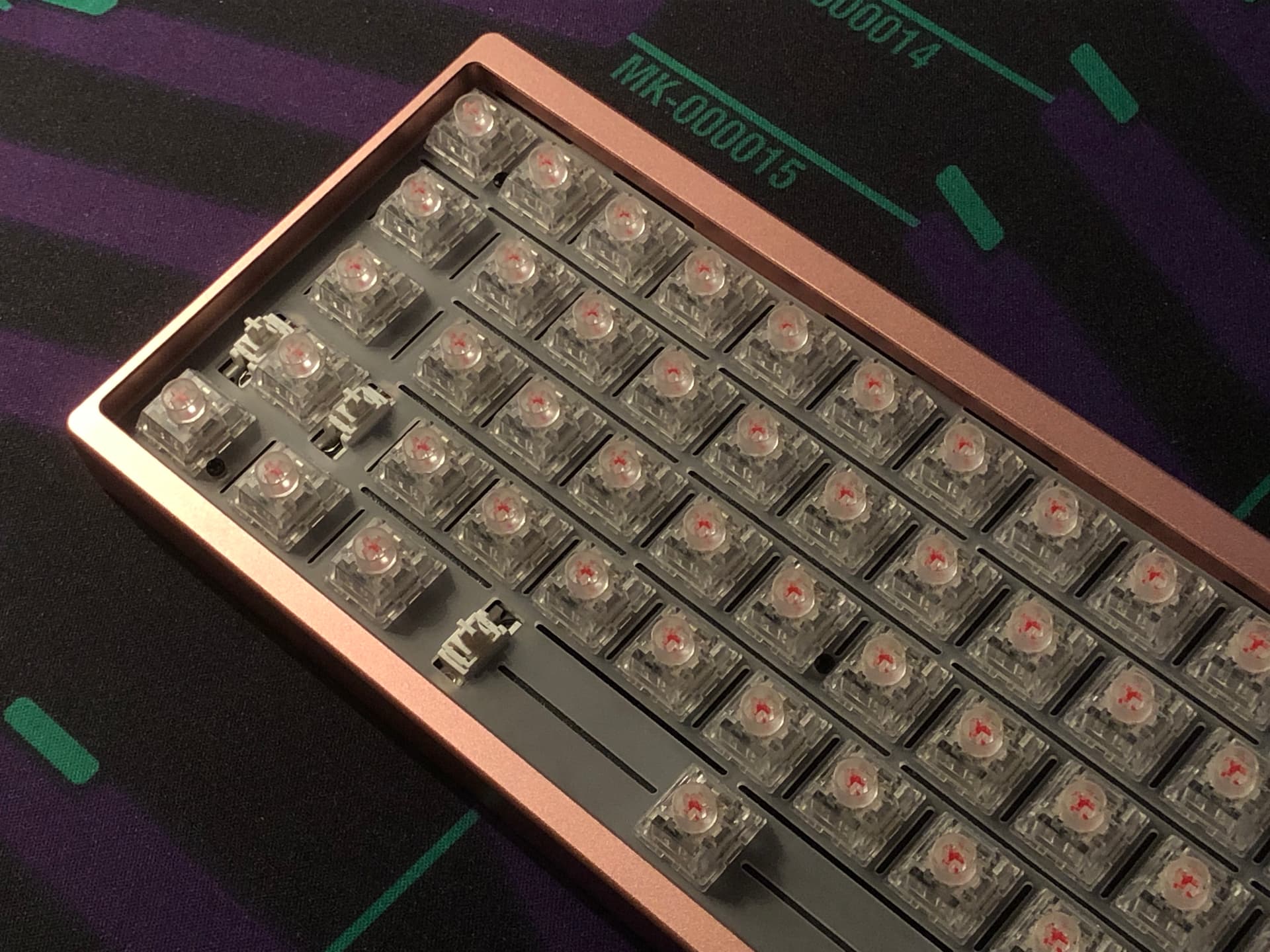
I put TTC Heart (aka Honey, Love) switches in mine; just seemed thematically appropriate with the case color, but I also really like them as switches.
Between the two versions I’d still say the classic Portico is a little more convenient for regular swapping; no wires connecting the top and bottom, and the brass thread inserts are more smooth to screw in and out of than the tapped holes in the aluminum case. This just means the plastic version is a little faster to dis-assemble and re-assemble, and that it can be done with a little less care – but this aluminum version remains an excellent switch testing platform that’s very easy to break-down and re-assemble.
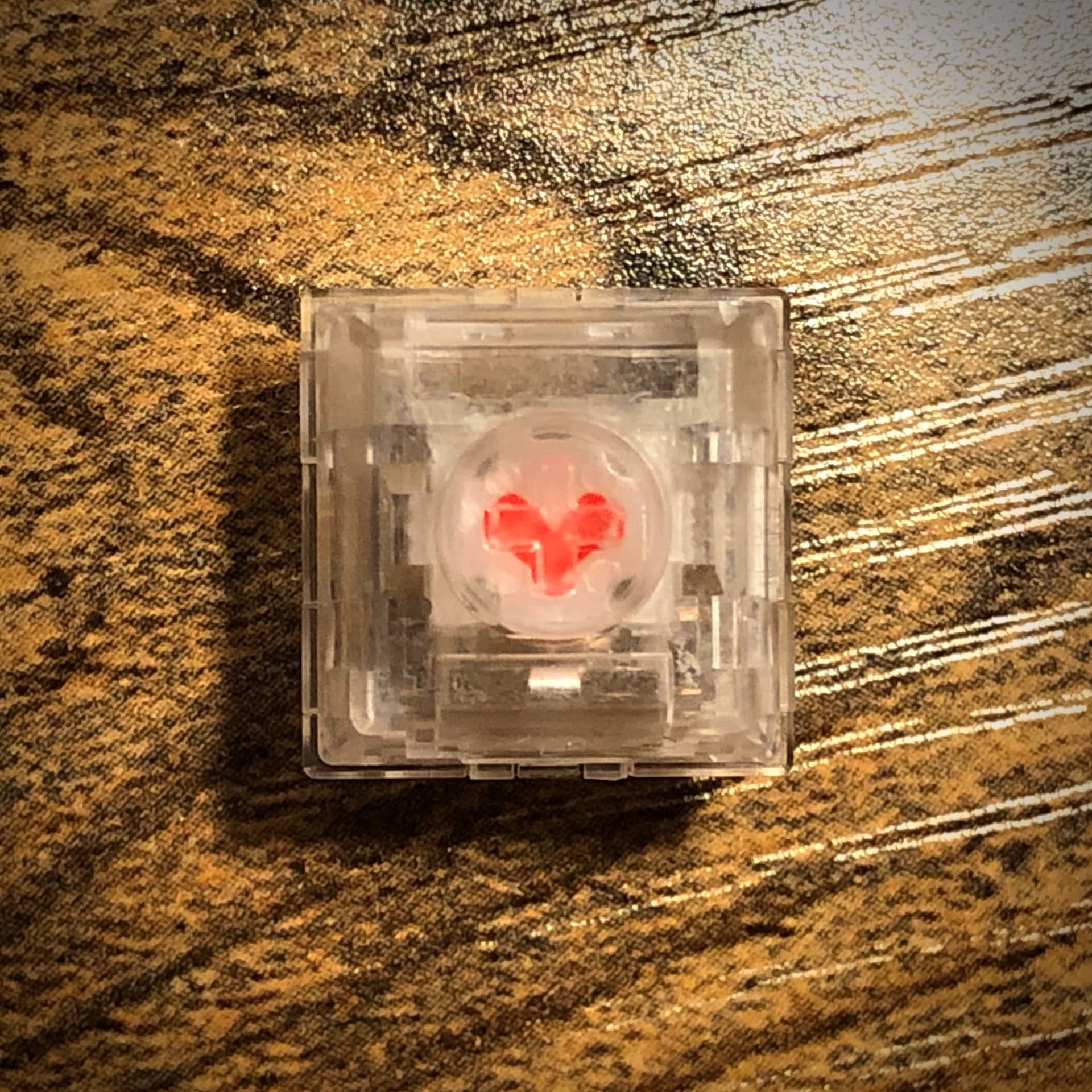
A closer look at the TTC Heart / Honey / Love switches I installed in today’s keeb. These are fairly light, slow-curve linears with some very unique qualities.
Performance:
Now I’ve only had a few days with this so far, and that’s why this is a First Impressions article rather than a full review – but I do indeed have some of those impressions to share with you today.
While the original Portico feels almost surprisingly light until you put the silicone weight in it, the 68BL is no dainty keeb. The frame is nice and minimal, but the build has enough heft to keep it firmly planted where it’s placed on the desk – it has a solid stance that inspires typing confidence.
So far I’ve only tried the polycarbonate plate with flex-cuts, and I have to say I like it quite a bit. Because of the design there’s not a lot of “flex” per-se – no real trampoline action going on here – however the dampening does its job of absorbing high-frequency vibrations and eliminating hot-spots, while also taking the edge off of any hard bottom-outs. So far I’m finding the typing experience on this keyboard to be very pleasant.
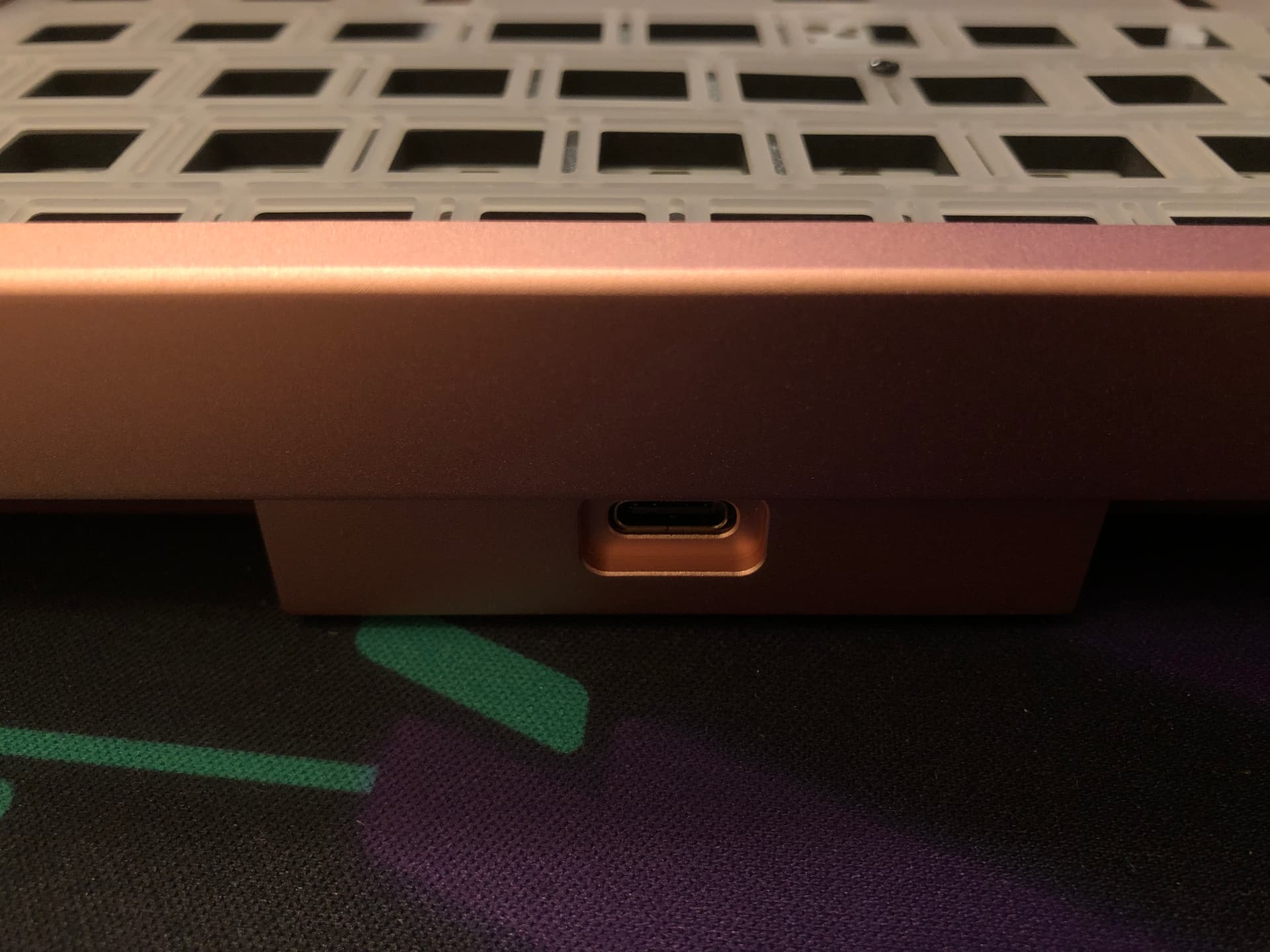
A close look at the finish, and a view of the USBC port.
A note about the RGB: the previous Portico was unfortunately plagued with instability when it came to the RGB behavior, but I’m happy to report having seen no such issues so far with the 68BL. This doesn’t tend to be a big deal for custom keyboard buyers, but it’s nice to know the option is there and fully functional.
The last thing I’ll mention for performance today is sound. While the typing feel is better than I thought it would be, it’s almost eclipsed by how much better the sound is than I was expecting. By that I mean I fully anticipated this keyboard to be firm, harsh, and ping-y… I was impressed to find that it’s none of those things.
Have a listen:
I’m currently using the included foam sheet, which is actually a composite of foam glued to plastic. At first I thought the plastic was backing meant to be taken off, but the glue is pretty strong so it seems the plastic is meant to stay with it. I decided to give it a shot that way. I’m not sure how much of a role it’s playing yet, but the sound I’m getting from this keyboard is delightfully clean and poppy, sounding like a build that might easily cost twice as much. Not bad!
I’m happy with just about every aspect of this keyboard so far, but I think the sound is what impresses me the most. In terms of my own collection over the years, this is the first all-aluminum enclosed keyboard I’ve ever used that isn’t harsh or ping-y – and that counts for a lot in my book. Switching to a heavy metal keeb pretty much always meant sacrificing sound, feel, or both – but not with this one, and that’s awesome.
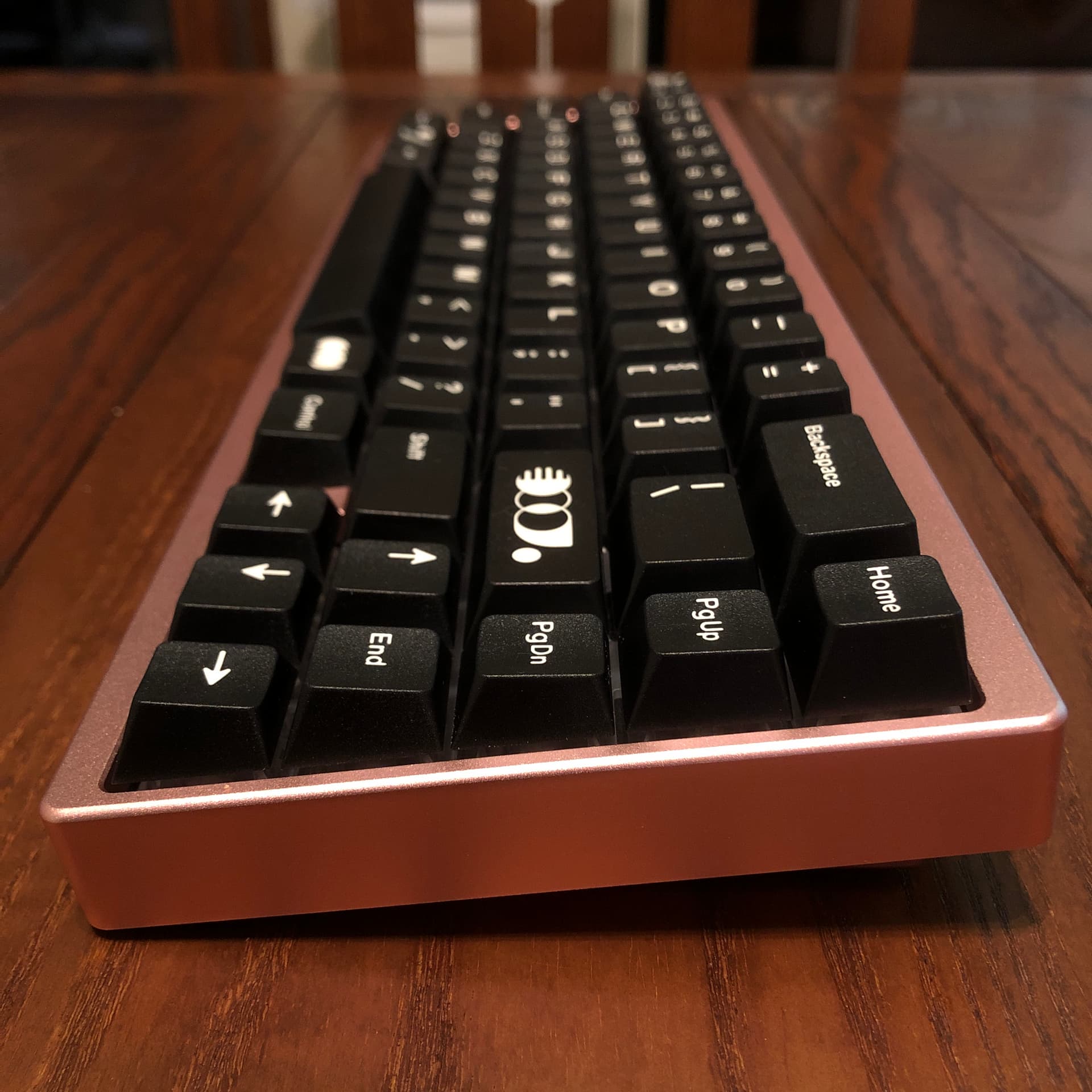
I think this keyboard is very pretty. I didn’t plan to use Noire with a pink keyboard, but I think it’s quite suitable.
A quick note about software; this keeb is sold as VIA-compatible, but I haven’t yet tested that feature. I can confirm it works on the previous iteration, but since the layout is already how I like it I haven’t had a reason to fiddle with it just yet.
Quick comparisons with peer products:
I see this keyboard’s most direct competitor as the KBD67 v3, and it’s a direct evolution from the classic Portico, so those are the two boards on which I’ll focus comparing with the 68BL.
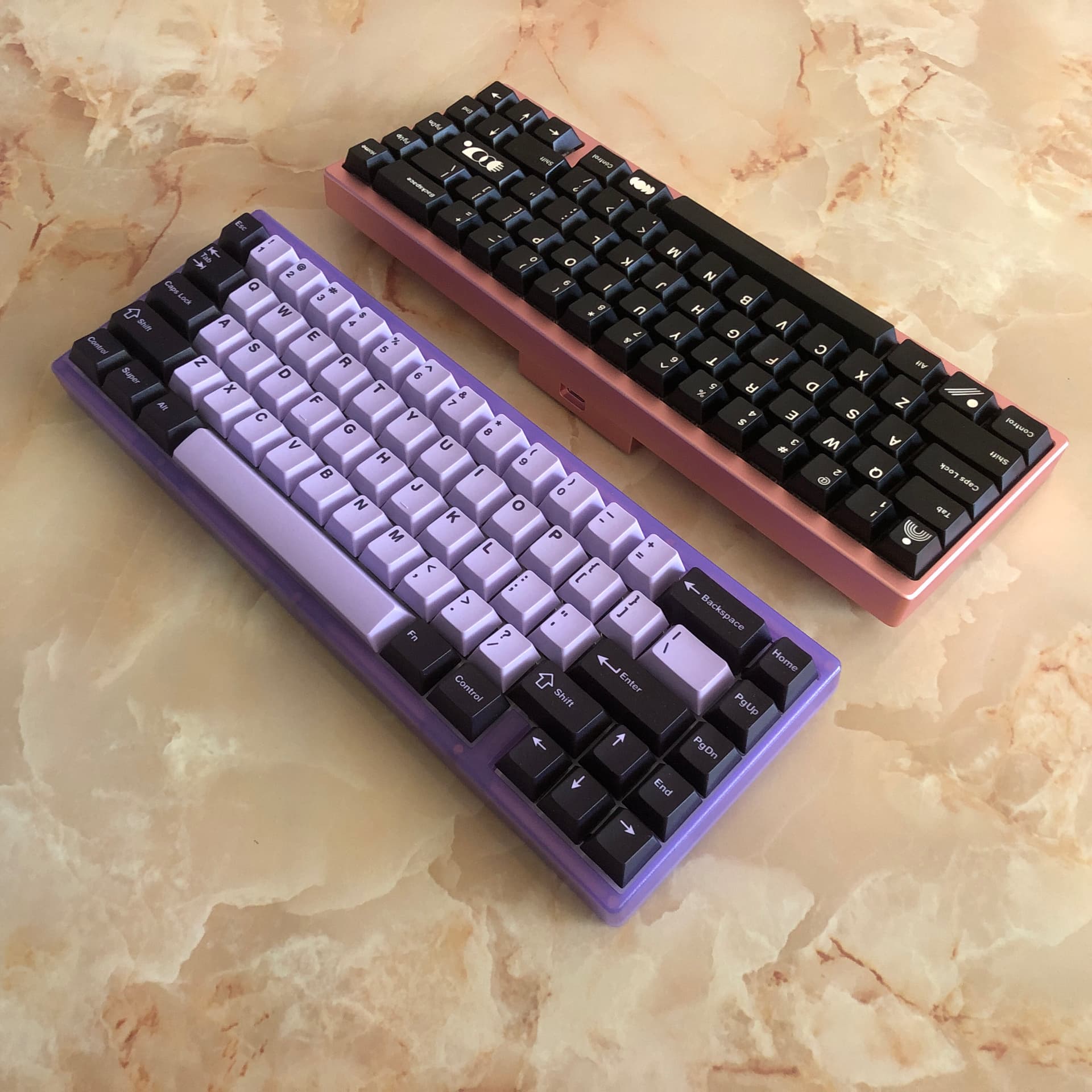
I’m really quite a fan of both of these.
Compared with the classic Portico it’s obviously more heavy and planted on the desk, and unsurprisingly it feels more solid as a result. Since someone asked: the classic Portico pictured above weighs-in at 709g, while the Black Label next to it weighs 1209g. That makes the Black Label about half a kilogram – or just over a pound heavier.
It should also come as no surprise that the Black Label comes across as more premium with its material and finish. Functionally, I suppose the biggest difference is the addition of the daughter board – this means the cable is sitting lower to the desk, and that any potential servicing of the port will be easier.
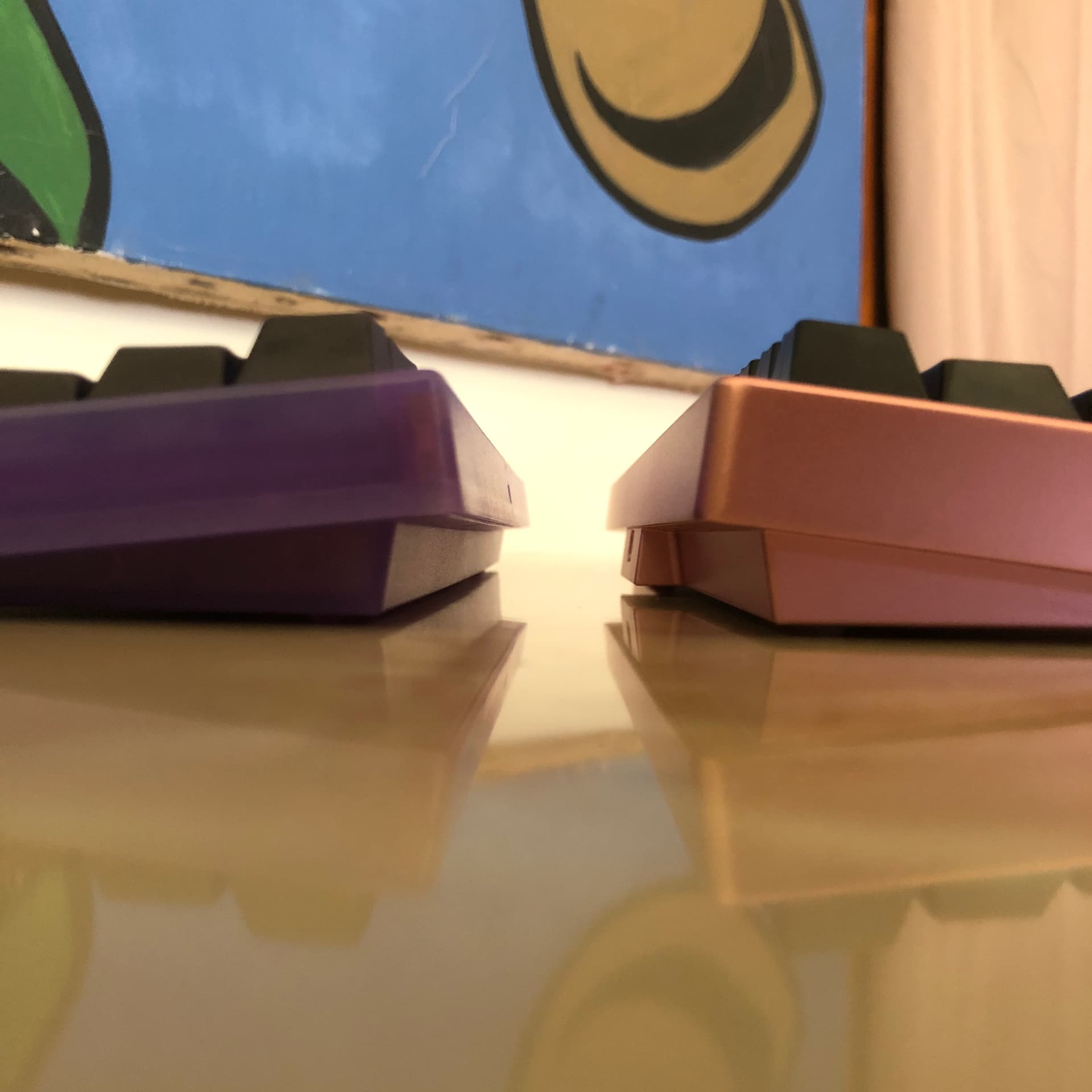
Here you can see the rear side profiles, and the differing locations of the USB ports.
Compared with its ostensible rival the KBD67 v3, I think there’s a bigger gulf between these two than between their respective plastic versions. While the 67L and Portico are pretty comparable in terms of quality, features, and price with reasons to choose one or the other coming down to small feature differences, these two metal keebs aren’t quite so similar. With the KBD67 v3, moving over to metal sacrifices the sound the 67L is known for – and it also significantly firms-up the feel. The v3 isn’t a bad keeb by any means – but it does give up just about everything that makes it special for that weight and material.
In my mind, the main reason for getting a metal version of a keeb instead of a plastic one is to have that premium feel and presence on the desk – something about which I think the 67 v3 shoots itself in the foot. All of these keebs are some variation on a sandwich; top and bottom halves holding the rest together.
The 67s have a visible seam in the middle – itself not really a problem or anything – but on the aluminum version especially it comes off looking like an after-thought. It’s not beveled or chamfered like other edges, and the faces don’t meet up exactly – nor do the faces often reflect the same color at the same time, making the separate nature of the halves all the more evident. It’s the only kinda derpy looking thing on an otherwise very well-resolved design – kind of a non-issue for me on the plastic one – but on the metal version, I think it stands out just a bit too much, undermining that “premium” quality feel it’s going for.
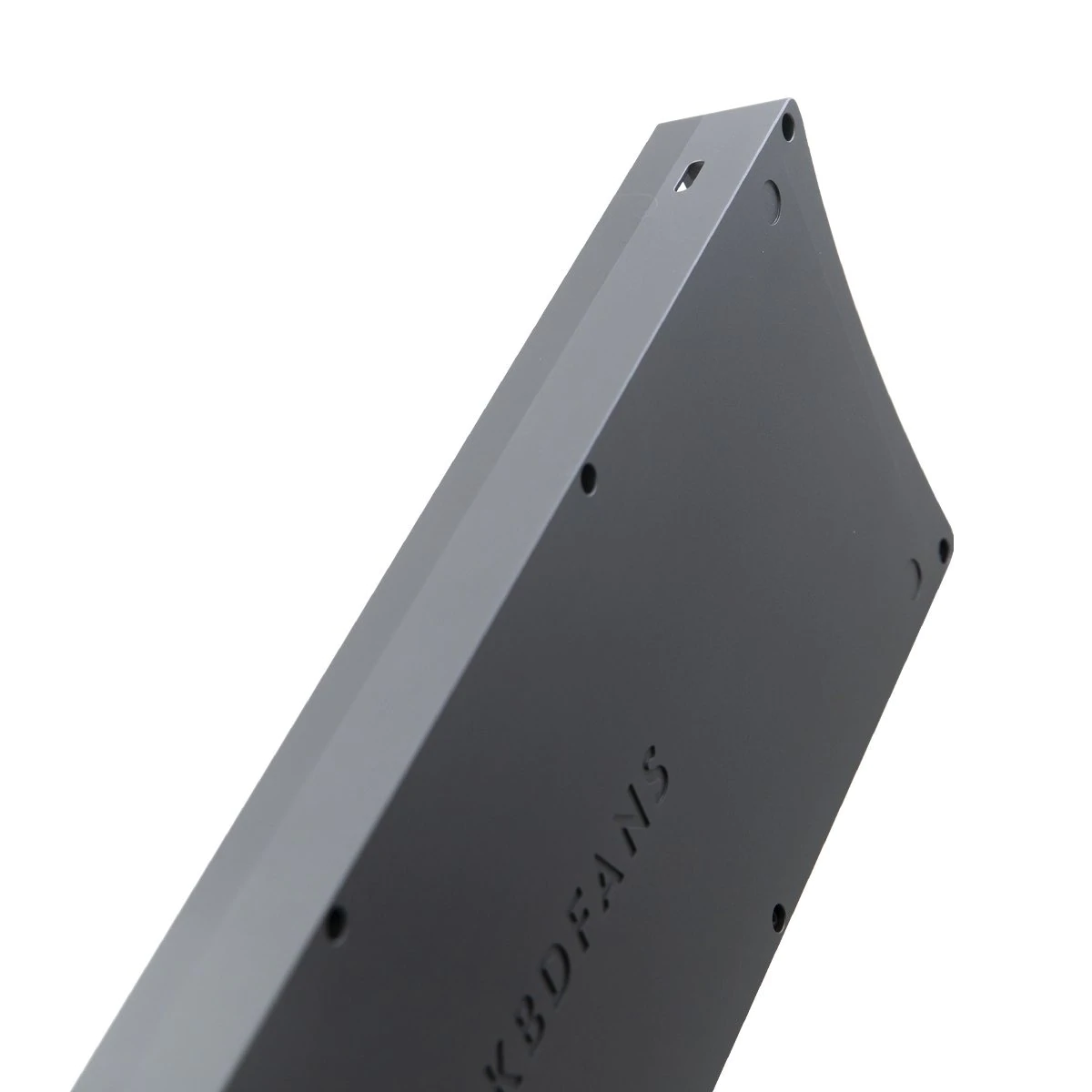
KBD67 v3 – also known as the metal case upgrade for the KBD67 Lite. It looks good – but not great. So close – but that seam…
The Portico68 BL, on the other hand, has its seems thoughtfully hidden at the bottom of the keeb – just like its plastic version. More impressive than that, however, is that moving from the plastic to the metal Portico does not mean sacrificing good sound. Obviously it won’t be the same, but the P68BL has a nuance and cleanliness to the sound and feel that the 67 v3 just doesn’t. Going from a 67L to a 67 v3 feels like a lateral movement that involves compromise. Going from a Portico to a Portico68 BL just seems like an objective upgrade to me.
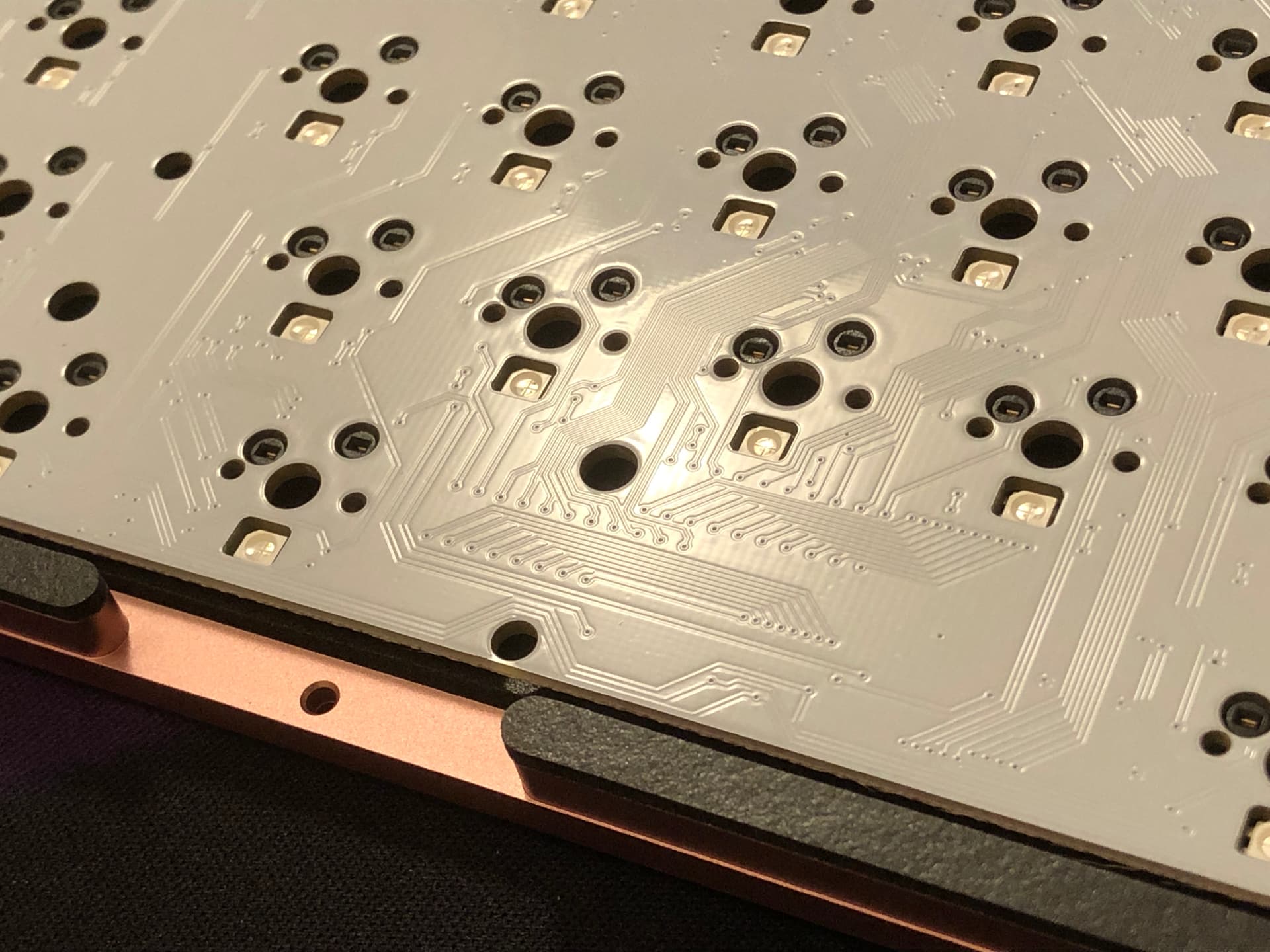
A closer look at the main PCB and lower gaskets. I think these traces look pretty cool.
Early Conclusions:
I’m still in my first week with this keyboard, but it’s quickly and comfortably becoming one of my very favorites, if not my absolute favorite. If it had bluetooth I think it actually would be perfect – but I don’t take off any points for that being absent. It really does check all my boxes: it’s beautiful, it’s reliable, it has excellent haptics, it sounds great, and it’s well-built.
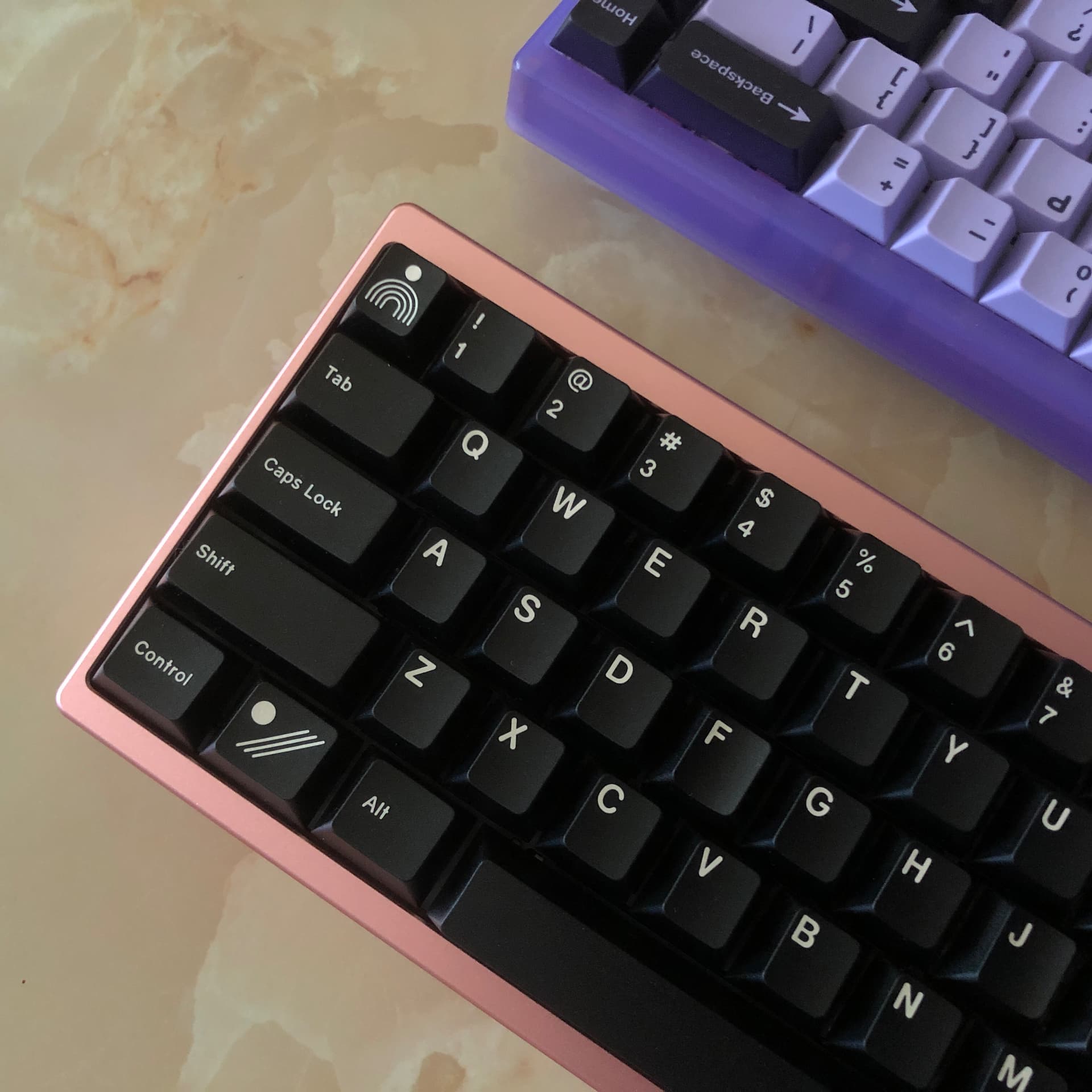
I really like this keeb. I also really need a bigger dust filter for my house.
As of yet, I don’t have a single complaint. I like most of the keyboards I buy, but I’m especially pleased with this purchase.
That very well could change over the next few weeks so take it with a grain of salt – but my experience with the oddly-named Portico68 Black Label so far has been exclusively and remarkably positive. Right now I really can’t find a single reason not to recommend it to anyone looking for a premium (if not high-end custom) 65% keyboard.
As of writing the kit is currently available for sale, and you can find it here.

